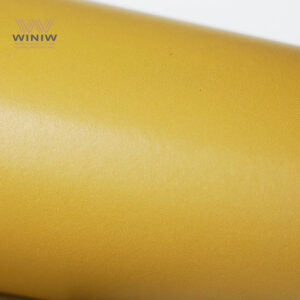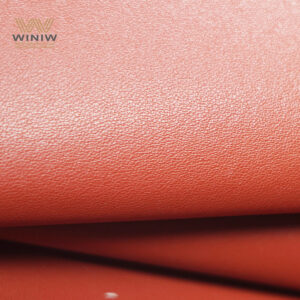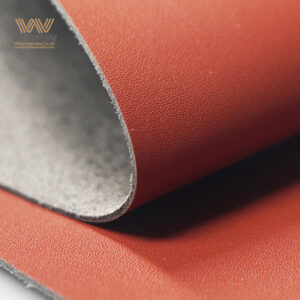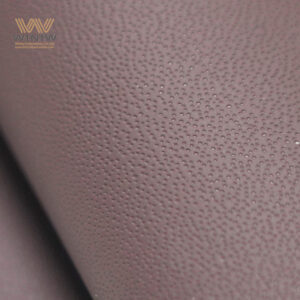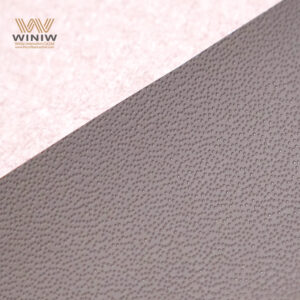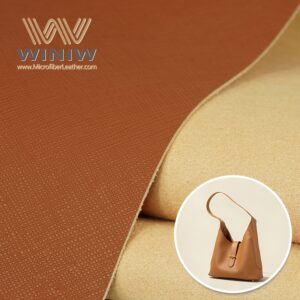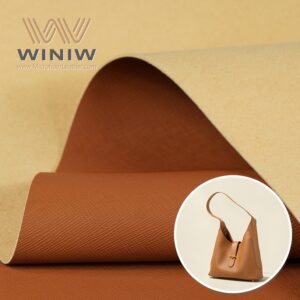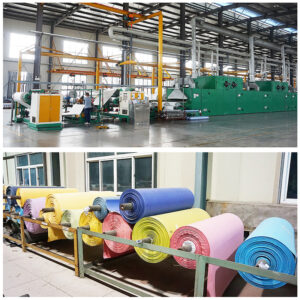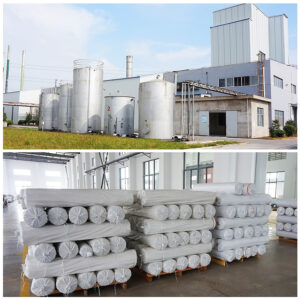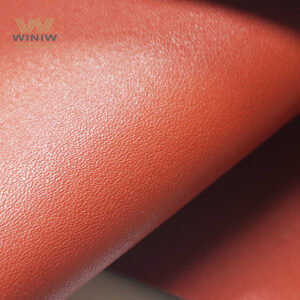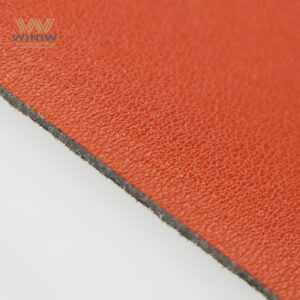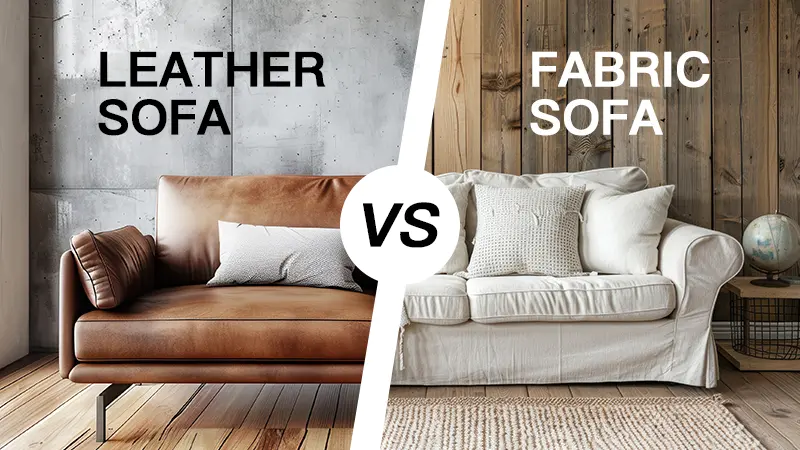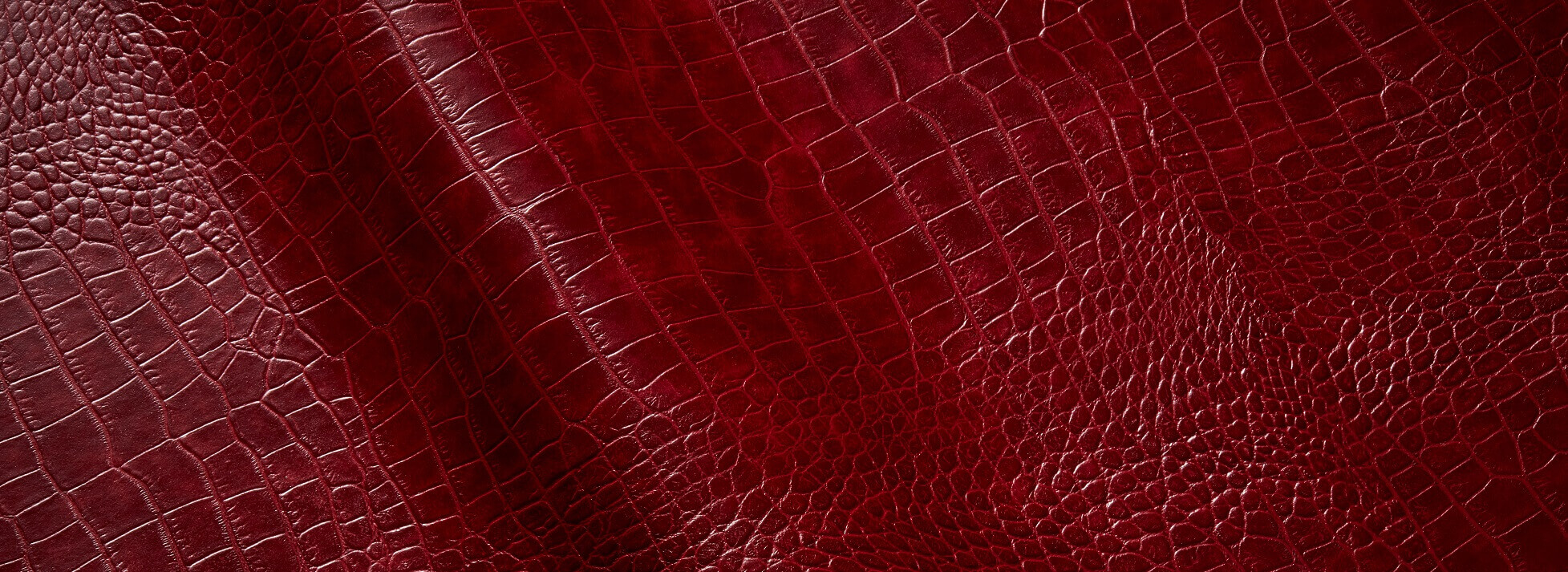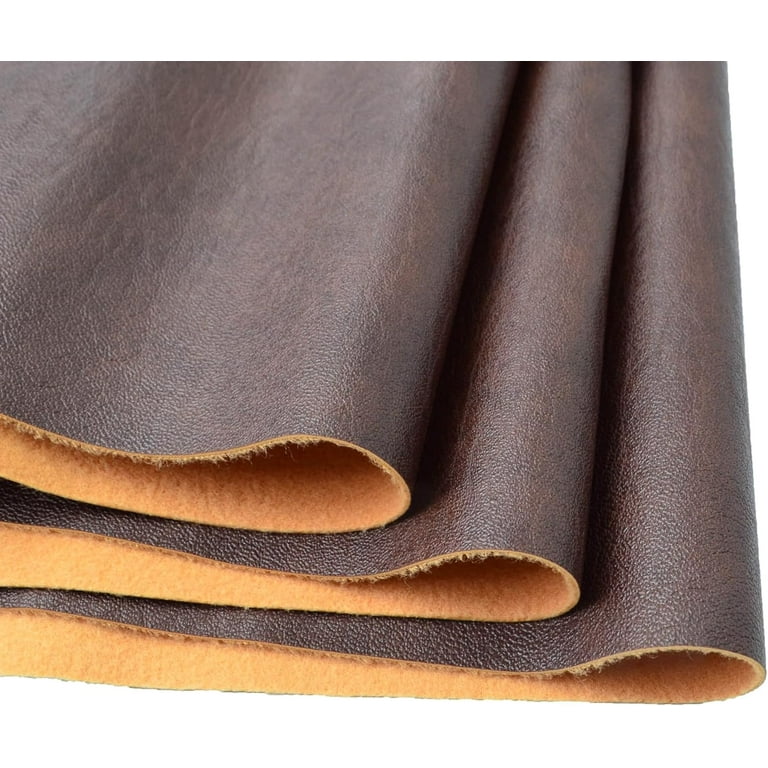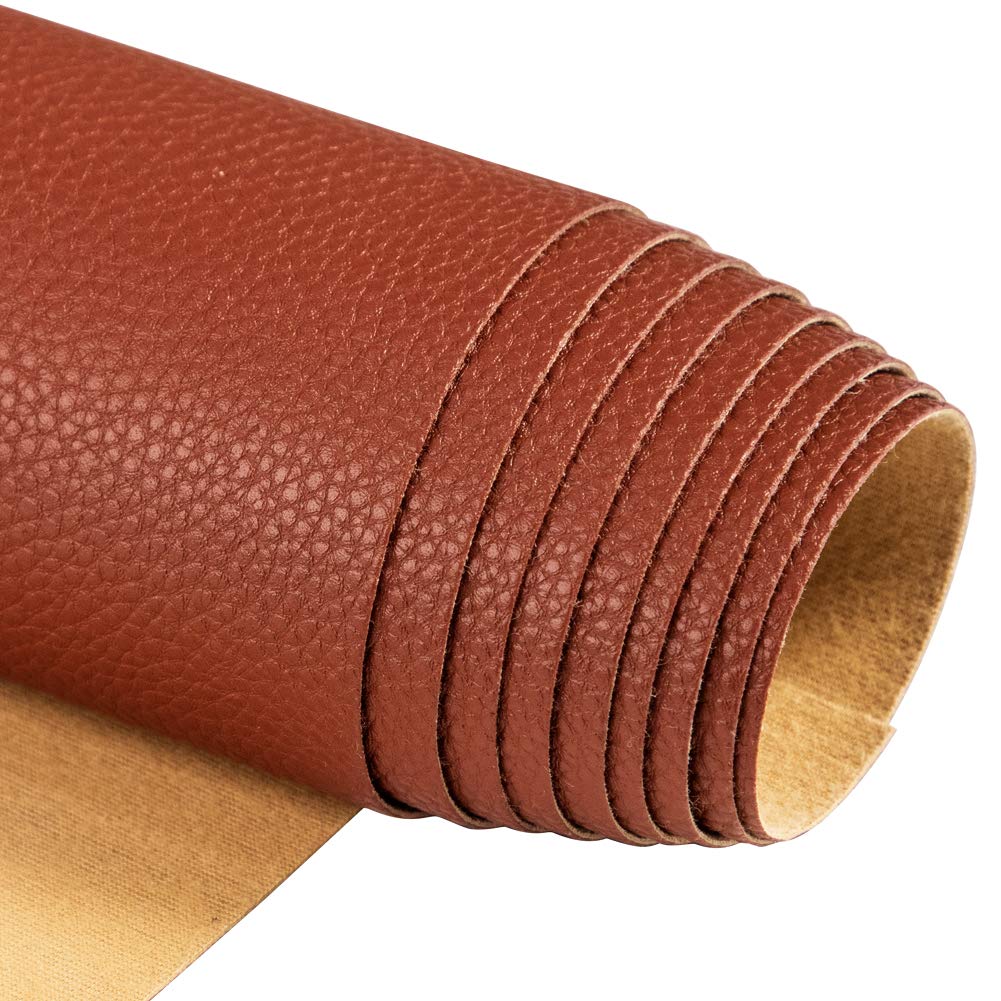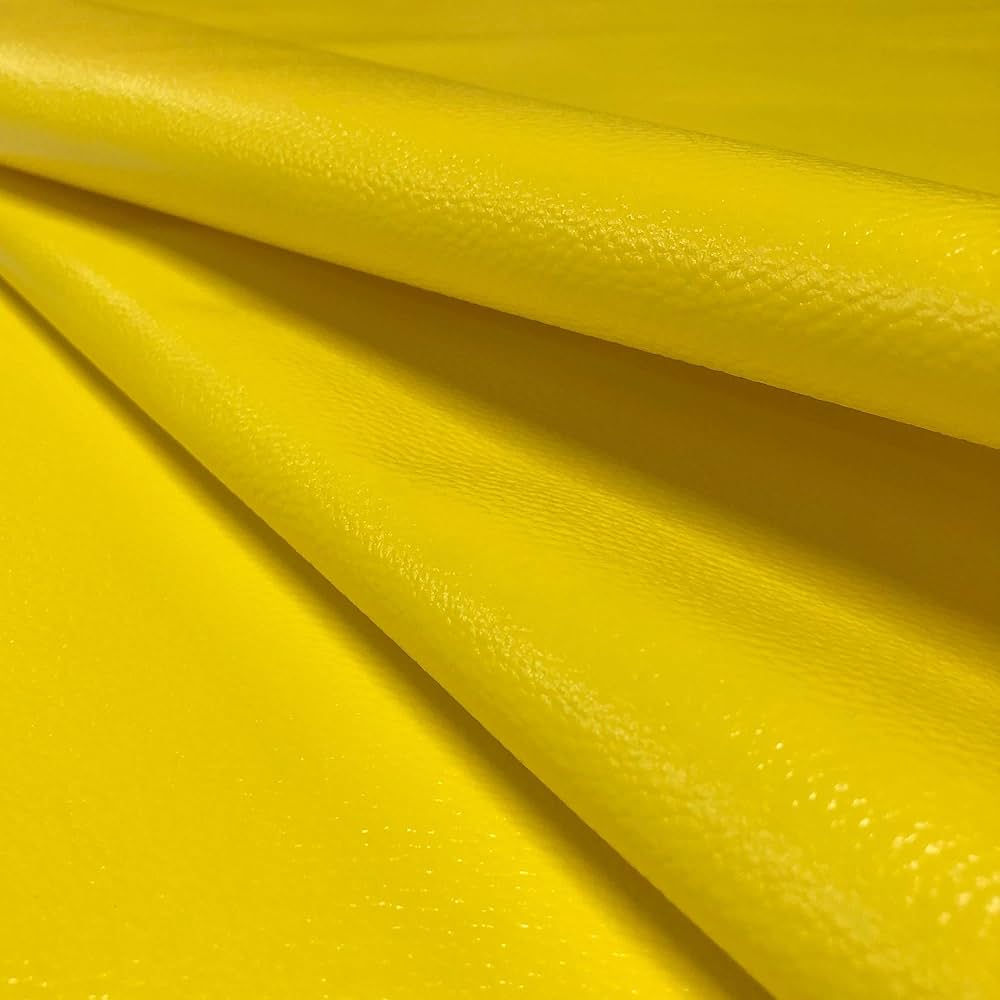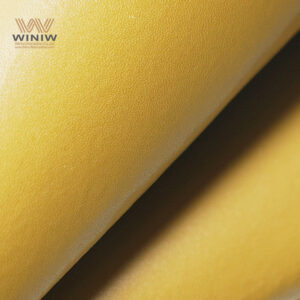

I always start my search for non leather purses by looking for eco-friendly materials, ethical brands, and styles that fit my needs. I choose sustainable options that match my values and lifestyle. I believe anyone can find a vegan purse that looks great and feels right. Shopping this way feels rewarding because I know my choices support a better future for people and the planet.
Key Takeaways
- Choose eco-friendly materials like cork, hemp, and cactus leather for sustainable purses.
- Support ethical brands that prioritize fair labor practices and transparent supply chains.
- Look for durable purses that can withstand wear and tear, reducing the need for replacements.
- Check for certifications like GOTS and Fair Trade to ensure your purse meets sustainability standards.
- Consider the full lifecycle of a purse, from material sourcing to repair and recycling options.
- Explore a variety of styles and colors to find a purse that matches your personal aesthetic.
- Be mindful of packaging; choose brands that use recycled or biodegradable materials.
- Invest in quality pieces that last longer, saving money and reducing waste over time.
What Makes Non Leather Purses Sustainable
When I look for sustainable non leather purses, I focus on three main pillars: eco materials, ethical production, and durability. I believe that a truly sustainable purse should minimize harm to the environment, support fair working conditions, and last for years. I always consider the full lifecycle of a purse, from how the materials are sourced to how the bag can be repaired or recycled at the end of its life.
Eco Materials
Choosing sustainable materials is the first step. I look for eco-friendly animal-free leather alternatives that use renewable or recycled resources.
Renewable Fibers
I prefer purses made from renewable fibers. These materials, like cork, hemp, and cactus leather, grow quickly and require fewer resources. For example, cactus leather comes from the prickly pear cactus. This plant needs very little water and no pesticides. Farmers harvest the pads, which regrow quickly, so the process does not harm the plant or the environment. The production avoids harsh chemicals, making cactus leather a standout eco-friendly choice.
Recycled Content
I also value bags made from recycled content. Woven bags that use recycled fibers help reduce waste and lower the environmental footprint. Compared to leather bags, which rely on animal products and chemical tanning, these options save resources and prevent pollution. I see this as a practical way to support a cleaner planet.
Ethical Production
A sustainable purse must also come from ethical production. I want to know that the people making my bag work in safe conditions and receive fair pay.
Fair Labor
I check if brands commit to fair labor practices. This means workers get fair wages, reasonable hours, and safe workplaces. I believe that ethical brands should support their workers and local communities.
Transparent Supply
Transparency matters to me. I look for brands that share information about their supply chain. When a company tells me where and how they source their materials, I feel more confident in their ethical standards.
Durabilidad
A sustainable purse should last. I want my bag to stay stylish and functional for years, not just a season.
Quality Build
I examine the quality of stitching, zippers, and hardware. A well-made purse resists wear and tear, so I do not need to replace it often. This reduces waste and saves money in the long run.
Repair Options
I appreciate brands that offer repair services or easy-to-follow repair guides. If I can fix a strap or replace a zipper, I extend the life of my purse and keep it out of the landfill.
Tip: Always check care instructions and repair options before buying. A little maintenance goes a long way in making your sustainable materials last.
By focusing on eco materials, ethical production, and durability, I make choices that benefit both people and the planet. I encourage everyone to think about the full journey of their purse, from the field to your closet and beyond.
Best Materials for Sustainable Handbags

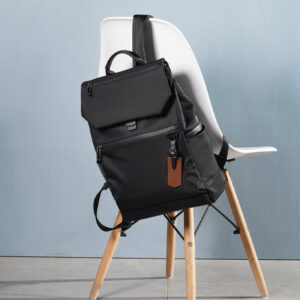
When I choose a sustainable purse, I always start by looking at the materials. Some options stand out for their eco-friendly qualities, durability, and style. Let me walk you through the top choices I recommend.
Cork
Benefits
- Lightweight and flexible, cork purses feel comfortable to carry.
- Water-resistant and easy to clean, which makes them practical for daily use.
- Naturally hypoallergenic, so I never worry about skin irritation.
Drawbacks
- Limited color range compared to synthetic options.
- Can show wear on corners over time if not cared for properly.
Eco Impact
I prefer cork because it comes from the bark of cork oak trees, which regrow after harvesting. This process supports biodiversity and absorbs carbon dioxide. According to recent data, cork fabric absorbs 14.7 tons of CO2 per hectare and does not use toxic chemicals. It is also completely recyclable, unlike traditional leather.
| Feature | Cork Fabric | Traditional Leather |
|---|---|---|
| Source | Bark of cork oak, harvested sustainably | Cow skin, involves animal cruelty |
| Environmental Impact | No waste, no toxic chemicals | Waste and harmful chemicals |
| Recycling | Completely recyclable | Hard to recycle |
| CO2 Sequestration | Absorbs 14.7 tons of CO2 per hectare | N/A |
| Worker Safety | Safe for workers | Chemical exposure risks |
| Biodiversity | Supports endangered species | N/A |
Recycled Plastics
Benefits
- Keeps plastic waste out of landfills and oceans.
- Durable and lightweight, so I find these bags last a long time.
- Supports a circular economy by reusing existing resources.
Drawbacks
- Some recycled plastics may still shed microplastics.
- Limited breathability compared to natural fibers.
Eco Impact
When I pick a purse made from recycled plastics, I know I am helping reduce plastic trash and save resources. These bags help close the loop in production, making the fashion industry more circular. Many brands now use recycled PET bottles or fishing nets to create stylish, sturdy purses.
Tip: Always check if the brand uses certified recycled materials for extra peace of mind.
Plant-Based Leathers
I love exploring new plant-based leathers. They offer unique textures and eco benefits.
Pineapple
Pineapple leather, or Piñatex, uses fibers from pineapple leaves. Farmers collect leaves left over after harvest, so no extra land or water is needed. These bags feel soft and look modern. However, some versions use a small amount of petroleum-based resin for strength.
Mushroom
Mushroom leather, known as mycelium leather, grows from the root structure of fungi. It requires little water and grows quickly. I find it soft, flexible, and biodegradable. Some brands use it for luxury purses.
Apple
Apple leather uses leftover apple peels from the juice industry. It feels smooth and holds color well. I like that it turns food waste into something beautiful. Some apple leathers blend with polyurethane for durability.
Coffee Grain Waste
Coffee leather uses spent coffee grounds. It gives bags a unique texture and sometimes a subtle scent. This material diverts organic waste from landfills and reduces methane emissions.
Fique Fiber
Fique fiber comes from a plant native to South America. It is strong, biodegradable, and grows with minimal pesticides. I see more brands using fique for structured, earthy handbags.
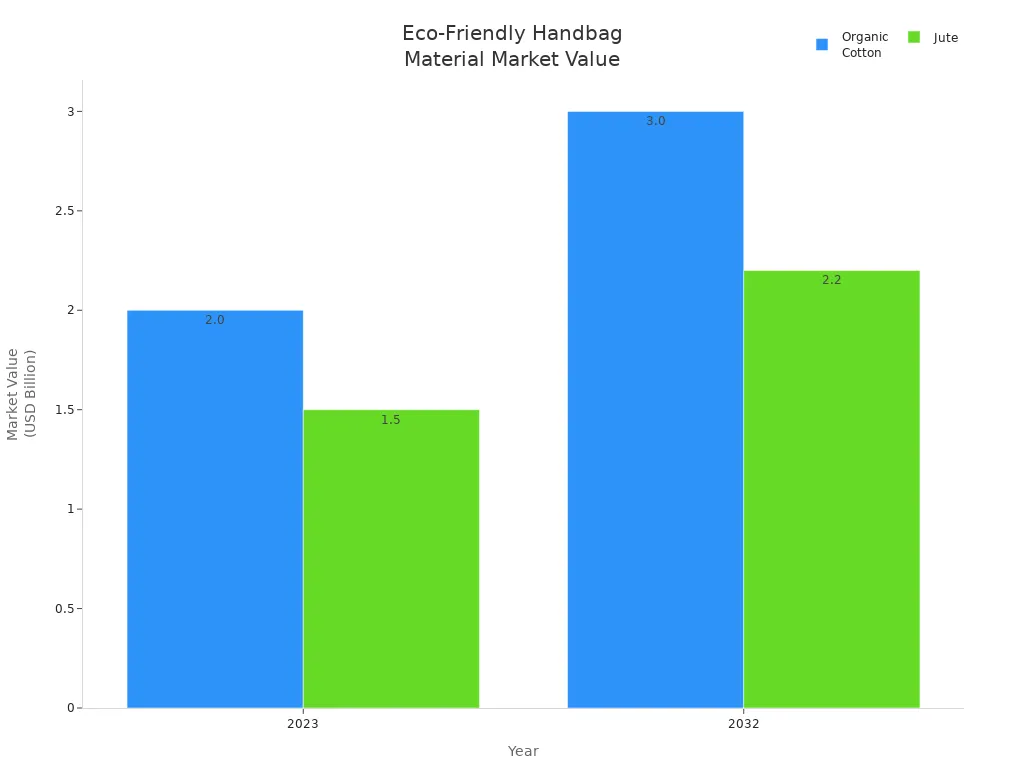
The market for sustainable materials like organic cotton and jute continues to grow. Organic cotton is projected to reach 3.0 billion USD by 2032, showing how much demand exists for eco-friendly options.
By choosing these innovative materials, I support a more sustainable future for fashion. Each option offers its own blend of style, function, and environmental responsibility.
Organic Cotton
Benefits
I often choose organic cotton for my handbags because it feels soft and comfortable. This material does not use harmful pesticides or synthetic fertilizers during farming. I notice that organic cotton bags are lightweight and easy to carry. Many brands offer a wide range of colors and prints, which helps me find a style that matches my wardrobe. Organic cotton is also biodegradable, so I know my bag will not harm the environment when I no longer use it.
- Soft and gentle on skin
- Lightweight and breathable
- Wide variety of colors and patterns
- Biodegradable and compostable
Drawbacks
Despite its advantages, organic cotton has some drawbacks. I find that cotton bags can stain easily, especially if I use them daily. The material may wear out faster than synthetic options, so I need to take care of my bag. Sometimes, organic cotton purses cost more because of the careful farming process. I also notice that water use in cotton farming remains high, even for organic crops.
Note: I always check care instructions for organic cotton purses. Gentle washing and air drying help maintain their shape and color.
Eco Impact
Organic cotton farming supports healthier soil and reduces pollution. Farmers rotate crops and avoid toxic chemicals, which protects local wildlife. I appreciate that organic cotton uses less energy during production compared to conventional cotton. However, water consumption still poses a challenge. Many brands now invest in water-saving irrigation and fair labor practices to improve the eco impact.
| Feature | Organic Cotton | Conventional Cotton |
|---|---|---|
| Pesticides | None | Heavy use |
| Water Use | Moderate to high | Alta |
| Biodegradability | Yes | Yes |
| Worker Safety | Safer | Chemical exposure risk |
| Price | Higher | Lower |
Other Options
Hemp
I recommend hemp as one of the most sustainable materials for handbags. Hemp grows quickly and does not need much water or pesticides. The fibers feel strong and resist stretching, so my hemp purses last for years. Hemp also absorbs carbon dioxide, which helps fight climate change. I like the natural, earthy look of hemp bags, though they may feel rougher than cotton.
- Fast-growing crop
- Minimal water and pesticide use
- Durable and long-lasting
- Absorbs CO2 from the atmosphere
Washable Paper
Washable paper offers a unique alternative for eco-friendly purses. This material looks and feels like leather but comes from cellulose fibers. I find washable paper surprisingly strong and lightweight. I can clean these bags with water, and they dry quickly. Washable paper is vegan and biodegradable, making it a smart choice for anyone seeking a modern, minimalist style.
Tip: I use washable paper purses for travel because they fold flat and weigh almost nothing.
By exploring organic cotton, hemp, and washable paper, I expand my options for sustainable handbags. Each material brings its own strengths and challenges, so I always match my choice to my needs and values.
How to Choose Sustainable Vegan Handbags
When I search for sustainable vegan handbags, I rely on a few key strategies to ensure my choices align with my values. I look for trusted certifications, brand transparency, and ethical labor practices. These factors help me identify truly sustainable vegan bags and avoid greenwashing.
Certifications
Certifications give me confidence that a handbag meets strict environmental and ethical standards. I always check for these labels before making a purchase.
GOTS
The Global Organic Textile Standard (GOTS) certification assures me that the cotton or other fibers in my bag come from organic sources. GOTS covers the entire supply chain, from harvesting to manufacturing. I know that GOTS-certified products avoid harmful chemicals and protect both workers and the environment. When I see this label, I trust that the bag supports sustainable farming and ethical handbags production.
Fair Trade
Fair Trade certification signals that the people who made my bag received fair wages and worked in safe conditions. I value this label because it guarantees that the brand invests in community development and worker welfare. Fair Trade also encourages environmentally friendly practices, which supports my goal of choosing sustainable vegan handbags.
PETA-Approved Vegan
En PETA-Approved Vegan label tells me that a handbag contains no animal ingredients and that the brand follows cruelty-free practices. This certification also requires brands to avoid animal testing and to provide transparency about their materials and processes. I use the following table to summarize what I look for in a PETA-Approved Vegan product:
| Criteria | Descripción |
|---|---|
| No Animal Ingredients | Products must be free from all animal-derived components such as leather, silk, wool, and down. |
| No Animal Testing | Brands must guarantee that neither the product nor its ingredients were tested on animals. |
| Transparency | Brands must provide clear information about their products’ ingredients and processes. |
Tip: I always double-check certification logos on the brand’s website or product tags to avoid misleading claims.
Brand Transparency
Transparency helps me understand how a brand operates and whether it truly supports eco-friendly and ethical values.
Supply Chain Info
I look for brands that share detailed information about their supply chain. This includes where they source materials, how they manufacture products, and who makes the bags. When a company provides this level of detail, I feel more confident that my vegan messenger bags and other accessories come from responsible sources.
Sustainability Reports
Many leading brands publish annual sustainability reports. These documents outline their environmental goals, progress, and challenges. I read these reports to see if a brand uses recycled materials, such as recycled PU vegan leather alternative, and if they set measurable targets for reducing their impact. Brands that share this information show a real commitment to sustainable practices.
Ethical Labor
Ethical labor practices matter to me because I want my purchases to support people as well as the planet.
Worker Welfare
I check if brands prioritize worker welfare by offering fair pay, safe working conditions, and reasonable hours. Ethical handbags brands often highlight their partnerships with certified factories or cooperatives. I believe that supporting these brands helps create a more just fashion industry.
Community Impact
I also consider how brands invest in the communities where they operate. Some companies fund education, healthcare, or local infrastructure projects. When I buy cruelty-free handbags from brands with strong community programs, I know my purchase has a positive ripple effect.
Note: I always research a brand’s labor policies and community initiatives before buying sustainable vegan bags.
By focusing on certifications, transparency, and ethical labor, I make informed choices that support sustainable, cruelty-free, and eco-friendly fashion. These steps help me find sustainable handbags that match my style and values.
Green Practices
When I evaluate a brand’s commitment to sustainability, I always look beyond materials and labor. I pay close attention to the green practices that brands adopt throughout their business. These practices show me how seriously a company takes its environmental responsibility. Two areas stand out: packaging and carbon offsetting.
Packaging
I notice that packaging often gets overlooked in the conversation about sustainable fashion. However, I believe it plays a crucial role in reducing waste and environmental impact. I always check how a brand packages its handbags before making a purchase.
- I prefer brands that use recycled or biodegradable packaging materials. These options help reduce landfill waste and lower the carbon footprint.
- I look for minimal packaging. Excessive boxes, plastic wraps, and unnecessary fillers signal to me that a brand may not prioritize sustainability.
- I appreciate when brands use reusable dust bags or compostable mailers. These small choices add up over time.
Here’s a quick comparison of packaging types I often see:
| Packaging Type | Eco-Friendly? | My Experience |
|---|---|---|
| Recycled Cardboard | Yes | Sturdy, easy to recycle, often used by top brands |
| Compostable Mailers | Yes | Lightweight, break down naturally, great for shipping |
| Plastic Wrap | No | Single-use, hard to recycle, I avoid brands that use this |
| Fabric Dust Bags | Sometimes | Reusable, but only eco-friendly if made from natural fibers |
Tip: I always reuse or recycle packaging whenever possible. I also contact brands to thank them for sustainable packaging or to suggest improvements.
Carbon Offsetting
I see carbon offsetting as another important green practice. Brands that offset their carbon emissions show me they care about their overall environmental impact, not just their products.
- I look for brands that calculate their carbon footprint and invest in offset projects. These projects might include reforestation, renewable energy, or methane capture.
- I check if brands share details about their offsetting efforts. Transparency matters to me. I want to know how much they offset and which projects they support.
- I value brands that set clear goals for reducing emissions, not just offsetting them. Real change comes from both reducing and balancing out carbon output.
Here’s what I consider when evaluating a brand’s carbon offsetting:
| Brand Action | What I Look For | Why It Matters |
|---|---|---|
| Public Carbon Reports | Detailed, recent, easy to find | Shows accountability |
| Third-Party Verification | Certified by groups like Gold Standard | Ensures real impact |
| Emissions Reduction Goals | Clear targets, progress updates | Focuses on long-term solutions |
Note: I always support brands that combine carbon offsetting with real efforts to cut emissions at the source.
By focusing on packaging and carbon offsetting, I make sure my purchases support brands that take a holistic approach to sustainability. These green practices help me feel confident that my handbag choices align with my values and contribute to a healthier planet.
Find Your Eco Match: Style and Function

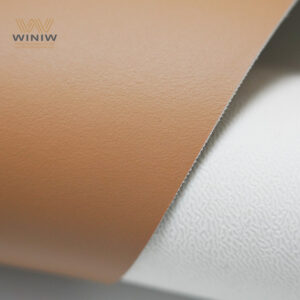
Size & Use
Everyday
When I select a purse for daily use, I focus on practicality and comfort. I need enough space for essentials like my phone, wallet, and keys, but I avoid anything too bulky. Compact purses made from innovative materials, such as the Senda Purse with coffee grain waste handles, offer a lightweight and stylish solution. This type of bag fits my essentials and makes a subtle statement about my commitment to eco-friendly fashion. I also appreciate structured totes, like the Panthera Tote in olive green cactus leather, which provide both durability and a firm silhouette. These options transition seamlessly from work to errands.
Special Events
For special occasions, I look for purses that add a touch of elegance without sacrificing my values. I often choose visually striking designs, such as the Agave Triangular Tote in green cactus leather. Its unique shape stands out at events and pairs well with layered outfits. When I need something more classic, I reach for a structured vegan top handle bag, like the Rue Burgundy made from recycled vegan leather. The detachable crossbody strap and roomy interior make it versatile for both formal gatherings and casual outings.
Style
Color
Color plays a significant role in how I express my personality through accessories. I gravitate toward earthy tones like olive green or burgundy for autumn, as they complement seasonal wardrobes. Many sustainable purses now come in a wide range of shades, allowing me to match my bag to any outfit. I find that vegan materials take dye well, resulting in vibrant, long-lasting colors.
Design
Design versatility is essential for me. I want a purse that adapts to different settings, from casual brunches to formal dinners. Woven vegan handbags have become a favorite because they blend style with function. Their textured designs add visual interest and elevate my look. I notice that these bags can compete with traditional leather purses in terms of versatility. I can style them for both casual and formal events, and their unique shapes and finishes keep my outfits fresh.
Tip: I always choose designs that reflect my lifestyle and make me feel confident, whether I am heading to work or attending a special event.
Maintenance
Cleaning
I pay close attention to cleaning requirements before choosing a purse. Different materials need different care routines. Here is a quick reference table I use:
| Material | Maintenance Requirements |
|---|---|
| Genuine Leather | Needs frequent care and conditioning |
| Vegan (PU / Faux Leather) | Can break or peel if not stored properly |
| Canvas | Prone to staining if not handled carefully |
| Suede (Natural or Faux) | Requires special treatment to prevent stains or water damage |
| Woven Faux Leather | Should be stored carefully to avoid dents |
I find that vegan purses often require less maintenance than genuine leather. I simply wipe them with a damp cloth and store them away from direct sunlight.
Storage
Proper storage extends the life of my bag. I keep structured purses upright and fill them with tissue paper to maintain their shape. For woven or textured options, I avoid stacking heavy items on top to prevent dents. I store all my purses in dust bags or breathable cotton covers to protect them from dust and moisture.
Note: I always check the care label and follow the brand’s recommendations to keep my sustainable purses looking their best.
Budget
Finding the right purse means balancing style, function, and cost. I always consider my budget before making a purchase. I believe that sustainable fashion should be accessible to everyone, so I look for options that fit different price points. Whether I want to save money or invest in a statement piece, I can find a non-leather purse that matches my values.
Affordable
When I search for affordable sustainable handbag options, I focus on brands that prioritize eco-friendly materials without inflating prices. Many companies now offer stylish vegan purses at reasonable costs. I often find great deals during seasonal sales or by shopping directly from ethical brands’ websites. I also check local boutiques and online marketplaces for unique finds.
Here are some tips I use to keep my purchase within budget:
- I set a maximum price before I start shopping.
- I compare prices across several brands to find the best value.
- I look for simple designs, which often cost less than highly embellished bags.
- I check for certifications, even on lower-priced items, to ensure they meet my sustainability standards.
| Price Range | What I Get | Where I Shop |
|---|---|---|
| $30–$60 | Small crossbody or clutch | Online marketplaces, local |
| $60–$120 | Everyday tote or backpack | Direct from ethical brands |
| $120–$200 | Mid-size, unique design | Sustainable boutiques |
Tip: I always read reviews to make sure the bag is durable and matches the description.
Investment
Sometimes, I choose to invest in a higher-priced purse that will last for years. I see this as a way to reduce waste and support brands that lead in sustainable innovation. Investment pieces often feature premium plant-based leathers, expert craftsmanship, and timeless designs. These bags may cost more upfront, but they save me money over time because I do not need to replace them as often.
When I consider an investment purse, I look for:
- High-quality stitching and hardware
- Repair services or warranties
- Classic styles that do not go out of fashion
- Transparent sourcing and ethical production
I also ask myself if the bag fits my lifestyle and wardrobe. If I can use it for many occasions, I know it is worth the price.
Note: I treat investment purses with extra care, following all maintenance instructions to extend their lifespan.
By weighing both affordable and investment options, I make sure my purse purchase aligns with my financial goals and sustainability values. I encourage everyone to explore the full range of non-leather purses—there is a perfect match for every budget.
Where to Shop for Sustainable Handbags
Trusted Stores
Online
I often start my search for vegan and cruelty-free purses at reputable online retailers. Websites like EarthHero, Made Trade, and Immaculate Vegan curate collections from brands that prioritize transparency and responsible sourcing. These platforms provide detailed product descriptions, including information about materials, certifications, and ethical production. I appreciate that many of these sites offer filters for vegan or sustainable handbags, which makes it easier to find options that align with my values. I also check the brand’s own website for the most up-to-date information and exclusive collections.
Local
Shopping locally gives me the chance to support small businesses and artisans who create ethical handbags. I visit eco-friendly boutiques and artisan markets in my city. Many local shops now carry vegan purses made from innovative materials like cork or recycled plastics. I ask store owners about the sourcing and production process. This direct interaction helps me verify the authenticity of their claims and discover unique, handcrafted options that I might not find online.
Red Flags
Greenwashing
I stay alert for greenwashing when I shop for sustainable handbags. Some companies exaggerate or falsify their environmental claims to attract conscious consumers. I have noticed that public trust in corporate environmentalism remains fragile, and many people view environmental initiatives as marketing strategies rather than genuine commitments. To avoid falling for greenwashing, I look for these common signs:
- Vague or generic claims such as “eco-friendly” without specifics
- Lack of third-party certifications or transparent supply chain details
- Overemphasis on a single green feature while ignoring other impacts
- Heavy marketing language with little evidence of real action
Vague Claims
I avoid brands that use unclear language or fail to provide concrete information about their products. If a company cannot explain how its handbags are vegan or what makes them ethical, I move on. I trust brands that share details about their materials, labor practices, and environmental impact.
Shopping Tips
Labels
I always check for recognized certifications on product tags or websites. Labels like GOTS, Fair Trade, and PETA-Approved Vegan give me confidence that the bag meets strict standards. I also look for information about recycled content or plant-based materials.
Questions
I ask questions before making a purchase. I contact customer service or store staff to clarify anything that seems unclear. Here are some questions I use:
- What materials does this bag use?
- Where was it made, and under what working conditions?
- Does the brand offer repair or recycling programs?
Tip: I keep a checklist of my priorities—vegan, cruelty-free, ethical, and sustainable—so I can quickly evaluate new options.
By shopping thoughtfully and staying informed, I find handbags that reflect my values and support a more responsible fashion industry.
Care Tips for Non Leather Purses
Taking care of my vegan and sustainable purses helps me extend their lifespan and keep them looking fresh. I always follow specific cleaning, storage, and repair routines for each material. These habits ensure my ethical handbags remain stylish and functional for years.
Cleaning
By Material
I tailor my cleaning approach to the material of each purse. Using the right method prevents damage and preserves the bag’s appearance. Here is a quick reference table I use:
| Material | Cleaning Method |
|---|---|
| Canvas | Vacuum or shake off dirt, spot-clean with warm water and gentle soap, use vinegar for stubborn stains. |
| Satin/Silk | Use a dry brush or lint roller, spot clean with cold water and baby shampoo, air dry flat. |
| Suede | Brush with a suede brush, use a suede eraser or vinegar for stains, avoid direct water cleaning. |
| Woven | Dust with a soft brush, use a mild soap solution for cleaning, rinse with a damp cloth, air dry. |
I start by dusting with a soft brush. I prepare a mild cleaning solution with lukewarm water and gentle soap. I always conduct a spot test on a hidden area before cleaning the whole purse. For stains, I gently blot with a soapy cloth and rinse with a damp cloth to remove residue. I let my purses air dry in a shaded area to avoid fading.
Stain Removal
When I notice a stain, I act quickly. For canvas, I dab vinegar on stubborn spots. For suede, I use a suede eraser or a touch of vinegar. I avoid soaking the material. On satin or silk, I use cold water and a small amount of baby shampoo, then air dry flat. I never use harsh chemicals, as they can damage vegan materials.
Tip: Always test any cleaning product on a small, hidden area first to prevent discoloration.
Storage
Sun Protection
I keep my purses away from direct sunlight. Sunlight can fade colors and weaken natural fibers. I store my bags in shaded areas to maintain their vibrant look.
Proper Storage
Proper storage is essential for preserving the shape and structure of my non-leather purses. I use breathable cloth bags to prevent moisture buildup and mildew. I stuff my purses with acid-free tissue paper to help them keep their form. I store them upright on shelves to avoid crushing the weave or structure.
- Prevent sagging and misshaping by using tissue paper.
- Store purses in breathable cloth bags.
- Keep bags upright on shelves.
- Avoid heat and sunlight to protect natural fibers.
Note: I never hang my purses by their straps for long periods, as this can stretch or deform the handles.
Repair & Upcycle
DIY
I enjoy simple DIY repairs for minor issues. I fix loose threads with a needle and matching thread. For small scuffs on vegan leather, I use a damp cloth and a touch of olive oil. I sometimes add patches or decorative elements to cover stains or personalize my ethical handbags.
Professional
For major repairs, I trust professional services. I seek out local artisans or repair shops that specialize in vegan and sustainable materials. They can replace zippers, reinforce seams, or restore structure. Investing in repairs keeps my favorite bags out of the landfill and supports a circular fashion economy.
Tip: Regular maintenance and timely repairs help me get the most out of every purse, making my collection truly sustainable.
I always follow a few simple steps to find non leather purses that fit my values and style. I check for eco materials, ethical brands, and durability. Choosing non leather purses supports a cleaner planet and healthier communities. The table below shows how eco-friendly materials in sustainable handbags break down faster and protect wildlife, unlike plastic bags.
| Aspect | Eco-Friendly Materials | Plastic Bags |
|---|---|---|
| Decomposition Time | Biodegradable, breaks down naturally | 500–1,000 years to decompose |
| Environmental Impact | Reduces plastic waste, protects marine life | Contributes to pollution, harms wildlife |
| Carbon Footprint | Low carbon emissions, supports regenerative agriculture | High carbon emissions from fossil fuels |
| Soil Health | Enriches soil, prevents toxic runoff | Alters microbial activity, toxic to soil |
| Community Influence | Encourages sustainable habits | Promotes single-use culture |
I see many customers praise non leather purses for their style, comfort, and security. The table below highlights their feedback.
| Customer Feedback | Key Points |
|---|---|
| “…my Thafael bag was my trusty, stylish, comfortable and very secure companion…” | Positive remarks on style, comfort, and security features. |
| “The quality and craftsmanship are excellent…” | High satisfaction with quality and design. |
| “Finding a stylish anti-theft handbag felt as likely as finding a unicorn…” | Positive feedback on design and functionality. |
| “What I appreciated most was how safe I felt…” | Emphasis on safety features and peace of mind. |
| “The bag is beautiful and super sleek…” | Overall satisfaction with aesthetics and efficiency. |
I believe anyone can find their perfect vegan purse. I encourage you to explore non leather purses and shop with confidence. Every choice you make helps build a more sustainable future.
PREGUNTAS FRECUENTES
What is the best material for a non leather purse?
I prefer cork and plant-based leathers. Cork feels lightweight and resists water. Plant-based leathers, like cactus or pineapple, offer durability and style. Both options support sustainability and ethical fashion.
How do I clean my vegan purse?
I use a damp cloth for most vegan purses. For canvas, I spot-clean with mild soap. I always check the care label before cleaning. I avoid harsh chemicals to protect the material.
Are non leather purses as durable as leather?
I find many non leather purses last just as long as leather. Brands use strong stitching and quality hardware. I choose purses with repair options to extend their lifespan.
Where can I buy sustainable vegan handbags?
I shop at trusted online stores like EarthHero and Made Trade. Local eco-friendly boutiques also offer unique options. I always check for certifications and transparent sourcing.
How do I spot greenwashing in handbag brands?
I look for vague claims and missing certifications. Brands that share supply chain details and sustainability reports earn my trust. I avoid companies that use only buzzwords without proof.
Can I repair my non leather purse myself?
I fix minor issues like loose threads or small scuffs at home. I use a needle and matching thread. For bigger repairs, I visit a professional who specializes in vegan materials.
Do vegan purses cost more than leather ones?
I see prices vary. Some vegan purses cost less, especially simple designs. Premium plant-based leathers may cost more. I compare options and choose what fits my budget and values.
What certifications should I look for?
I check for GOTS, Fair Trade, and PETA-Approved Vegan labels. These certifications show the purse meets strict ethical and environmental standards. I trust brands that display these on their products.


